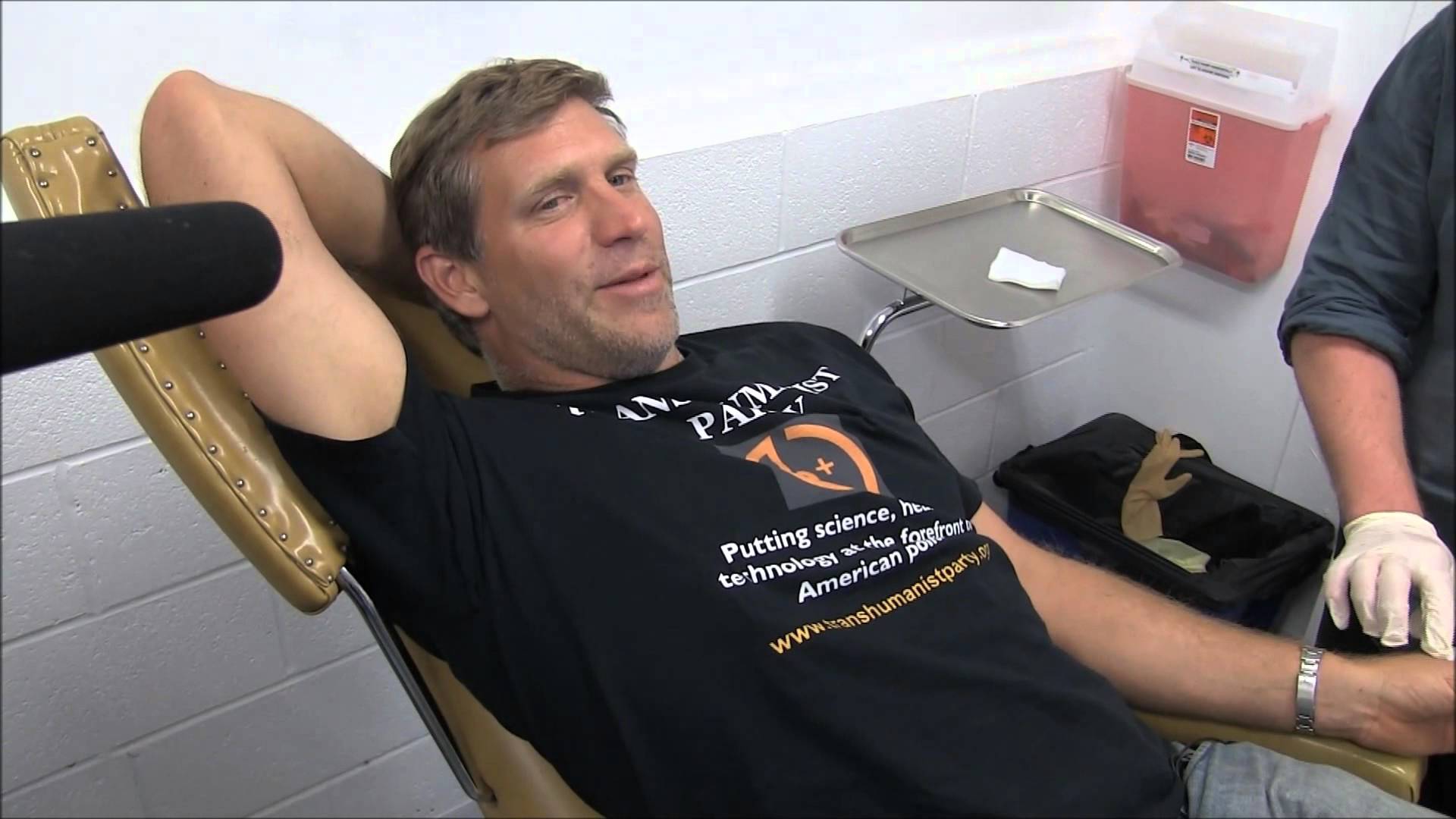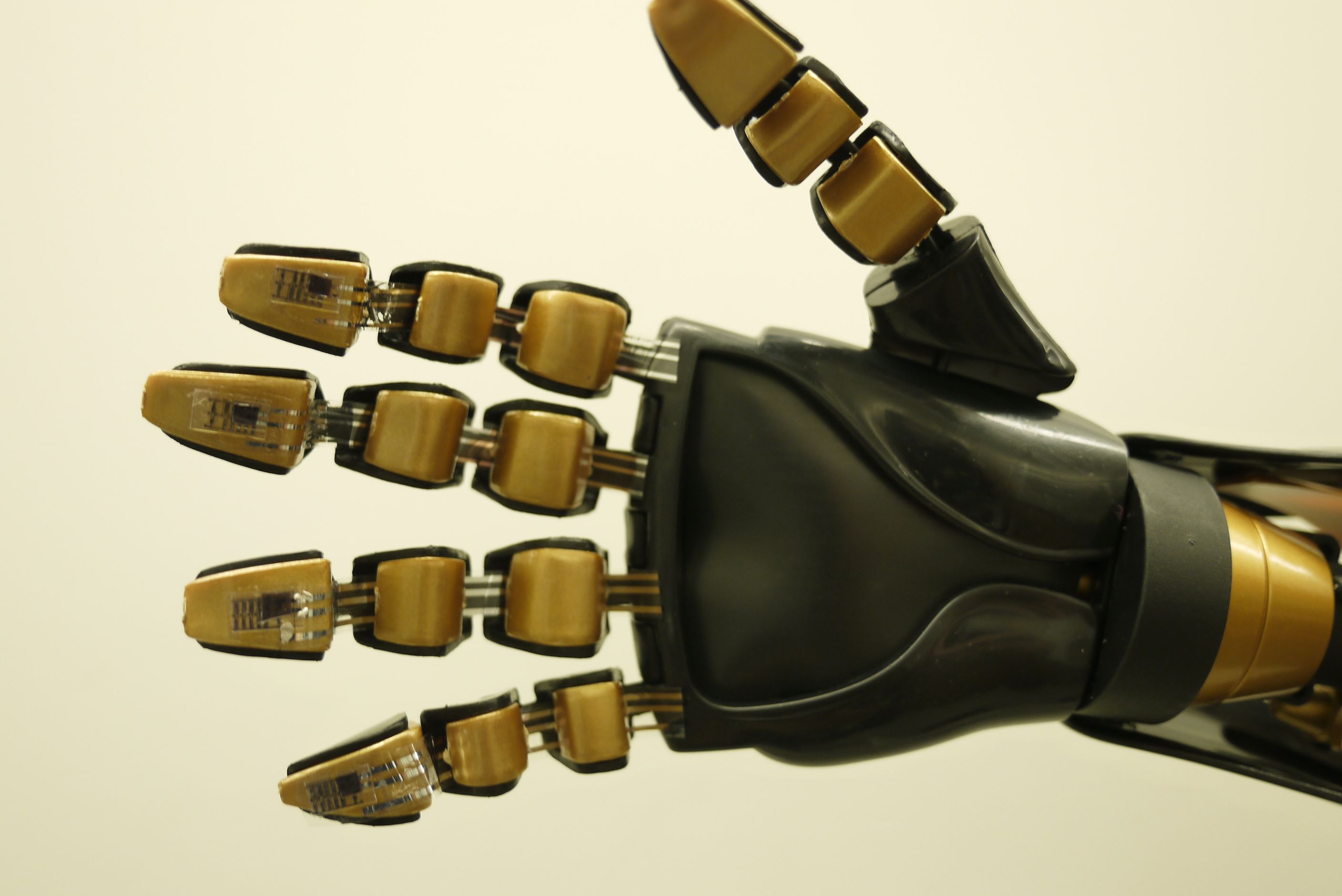Archive for the ‘cyborgs’ category: Page 124
Oct 11, 2015
Blind and paralyzed, an adventurer takes new steps
Posted by Sean Brazell in categories: biotech/medical, cyborgs, robotics/AI
Mark Pollock became blind asa young man, and was paralyzed by an accident later. Now, he is taking steps with the help of a robotic exoskeleton.
Oct 7, 2015
‘Neural Dust’ May Let Minds Meld With Machines
Posted by Scott Davis in categories: cyborgs, neuroscience
This neural dust sprinkled into an individual’s brain tissue could form an “implantable neural interface system that remains viable for a lifetime.”
Earlier this month, five researchers at the University of California, Berkeley, put out a paper discussing the possible development of mind-reading “neural dust,” which could be implanted directly into the human brain to allow people to interact with machines.
The paper is what the MIT Technology Review calls a theoretical study: The idea is “littered with challenges beyond the state-of-the-art.”
Continue reading “‘Neural Dust’ May Let Minds Meld With Machines” »
Oct 5, 2015
This Prosthetic Could Restore Memory In Dementia Victims
Posted by Robert James Powles in categories: biotech/medical, cyborgs, electronics, information science, neuroscience
Memory loss is a truly devastating part of dementia, but this invention aims to fix that by bypassing the damage, and repairing long term memory.
Alzheimer’s and dementia are complex diseases, and there’s currently no effective treatment. Given the unpleasant nature of the disease, there’s an urgent need for results. Instead of taking the usual biological route, one team has constructed a prosthetic made up of a small electrode array — which can help re-encode short term memory into long term.
Built using decades of research, the device operates using a new algorithm based on accumulated neural data. New sensory information is normally translated into a quick memory and transported as an electrical signal through the hippocampus, potentially for long term storage. If this region is damaged then the process is disturbed, and new experiences fail to be encoded. Alzheimer’s patients can often remember childhood events, but struggle with recent experiences; specifically because of this hippocampal damage.
Oct 5, 2015
Why I’m running for president—and got a chip implanted in my hand
Posted by Zoltan Istvan in categories: biotech/medical, computing, cyborgs, geopolitics, life extension, sex, transhumanism, virtual reality


My new and first article for The Daily Dot. It’s about transhumanism and the Immortality Bus tour:
Continue reading “Why I’m running for president—and got a chip implanted in my hand” »
Oct 2, 2015
This Icelandic company is building mind-controlled bionic limbs
Posted by Albert Sanchez in categories: cyborgs, transhumanism
Oct 1, 2015
Ray Kurzweil: Tiny Robots In Our Brains Will Make Us ‘Godlike’
Posted by Shailesh Prasad in categories: cyborgs, neuroscience, Ray Kurzweil, robotics/AI
Sep 30, 2015
3D printing in gel shows how scientists could print human organs
Posted by Shailesh Prasad in categories: 3D printing, biotech/medical, cyborgs, materials, neuroscience, transhumanism

While scientists have had success in the past printing structures like “bionic ears,” a clear path to making functional internal organs and tissue hasn’t really emerged. However, researchers at the University of Florida in Gainesville have developed a way of printing complex objects in gel, a method that could help pave the way to 3D-printed organs in the future.
The hard thing about printing intricate organic structures like blood vessels and complicated organs is that they collapse under their own weight before they solidify. The gel here, which is made of an acrylic acid polymer, acts as a scaffold to hold the structure in place during the printing process. That approach has already allowed the team to print with organic materials — and even make a replica of a human brain.
Continue reading “3D printing in gel shows how scientists could print human organs” »
Sep 27, 2015
Switzerland Will Host the First Bionic Olympics in 2016
Posted by Amnon H. Eden in categories: cyborgs, transhumanism
Sep 23, 2015
Engineering Humans for War
Posted by Sean Brazell in categories: computing, cyborgs, electronics, engineering, military
For decades after its inception in 1958, the Defense Advanced Research Projects Agency—DARPA, the central research and development organization of the Department of Defense—focused on developing vast weapons systems. Starting in 1990, and owing to individuals like Gorman, a new focus was put on soldiers, airmen, and sailors—on transforming humans for war. The progress of those efforts, to the extent it can be assessed through public information, hints at war’s future, and raises questions about whether military technology can be stopped, or should.
Gorman sketched out an early version of the thinking in a paper he wrote for DARPA after his retirement from the Army in 1985, in which he described an “integrated-powered exoskeleton” that could transform the weakling of the battlefield into a veritable super-soldier. The “SuperTroop” exoskeleton he proposed offered protection against chemical, biological, electromagnetic, and ballistic threats, including direct fire from a.50-caliber bullet. It “incorporated audio, visual, and haptic [touch] sensors,” Gorman explained, including thermal imaging for the eyes, sound suppression for the ears, and fiber optics from the head to the fingertips. Its interior would be climate-controlled, and each soldier would have his own physiological specifications embedded on a chip within his dog tags. “When a soldier donned his ST [SuperTroop] battledress,” Gorman wrote, “he would insert one dog-tag into a slot under the chest armor, thereby loading his personal program into the battle suit’s computer,” giving the 21st-century soldier an extraordinary ability to hear, see, move, shoot, and communicate.















